Here are some monarch-unfriendly invasive plants I make sure I do NOT grow in my yard.
Buddleia aka butterfly bush
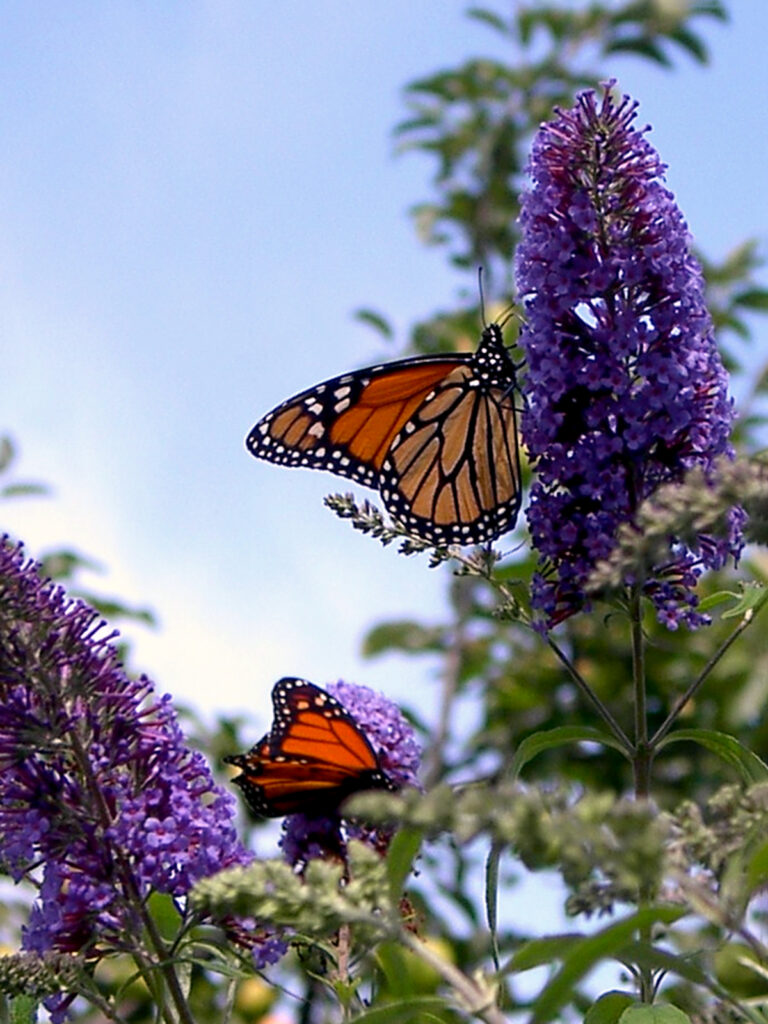
Long ago — before I even was able to identify monarchs in particular — I had planted quite a few buddleia. I was thrilled they did so well. They were even easy to start from seed. (Now I know why that shouldn’t have been surprising.)
There are three reasons why we don’t want buddleia.
- They’ve become invasive in many states, spreading into natural areas. (See BONAP map below.) In fact, even after not having buddleias for seven or eight years, I found one growing in the back of my yard, right up to the blooming stage. The seeds must last a long time in the soil. I know that some people say that it’s okay to have them if you remember to cut off the seed heads, but first, who really remembers to do all those things in a timely fashion and why would anyone want to add one more chore anyway? But even if this worked, this approach doesn’t address the next two issues.
- Tallamy in Bringing Nature Home notes that substituting a native plant for the non-native buddleia provides many habitat benefits, not just nectar.
- Summers in her book Designing Gardens with Flora of the American East notes that butterflies live very short lives. If they spend their time hanging around this unnaturally attractive nectar source, they aren’t looking for their increasingly difficult to find larval host plants for laying their eggs. With such a short life span, these missed opportunities can make a difference in the total population. To me, this is a compelling argument.
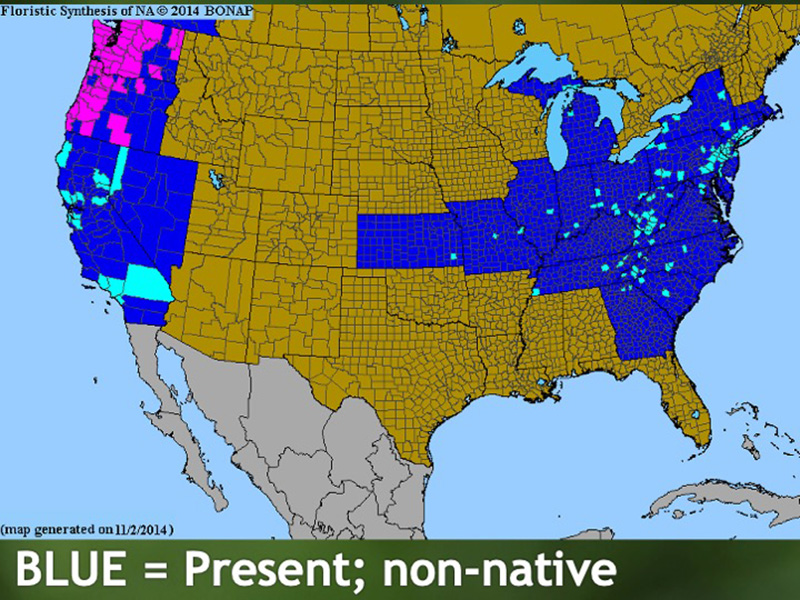
See the Resources section on the Butterfly Food page for some alternatives to buddleia.
Swallowwort
No one intentionally plants black or pale swallowwort, but it may arrive anyway. When I first saw it growing in my yard, I didn’t know what it was. When I learned its identity, I pulled it out immediately. Each year, I’ve found a few swallowwort plants in my yard. I suppose they might have hitchhiked on plants I bought. I’m always on the lookout for it now.
Black swallow-wort (Vincetoxicum nigrum; syn. Cynanchum louiseae) and pale swallow-wort (Vincetoxicum rossicum; syn. Cynanchum rossicum) are other milkweed relatives, though not native ones.
Swallow-wort’s chemical similarity to native milkweed tricks female monarchs into laying eggs on its leaves, but monarch caterpillars cannot survive on it.
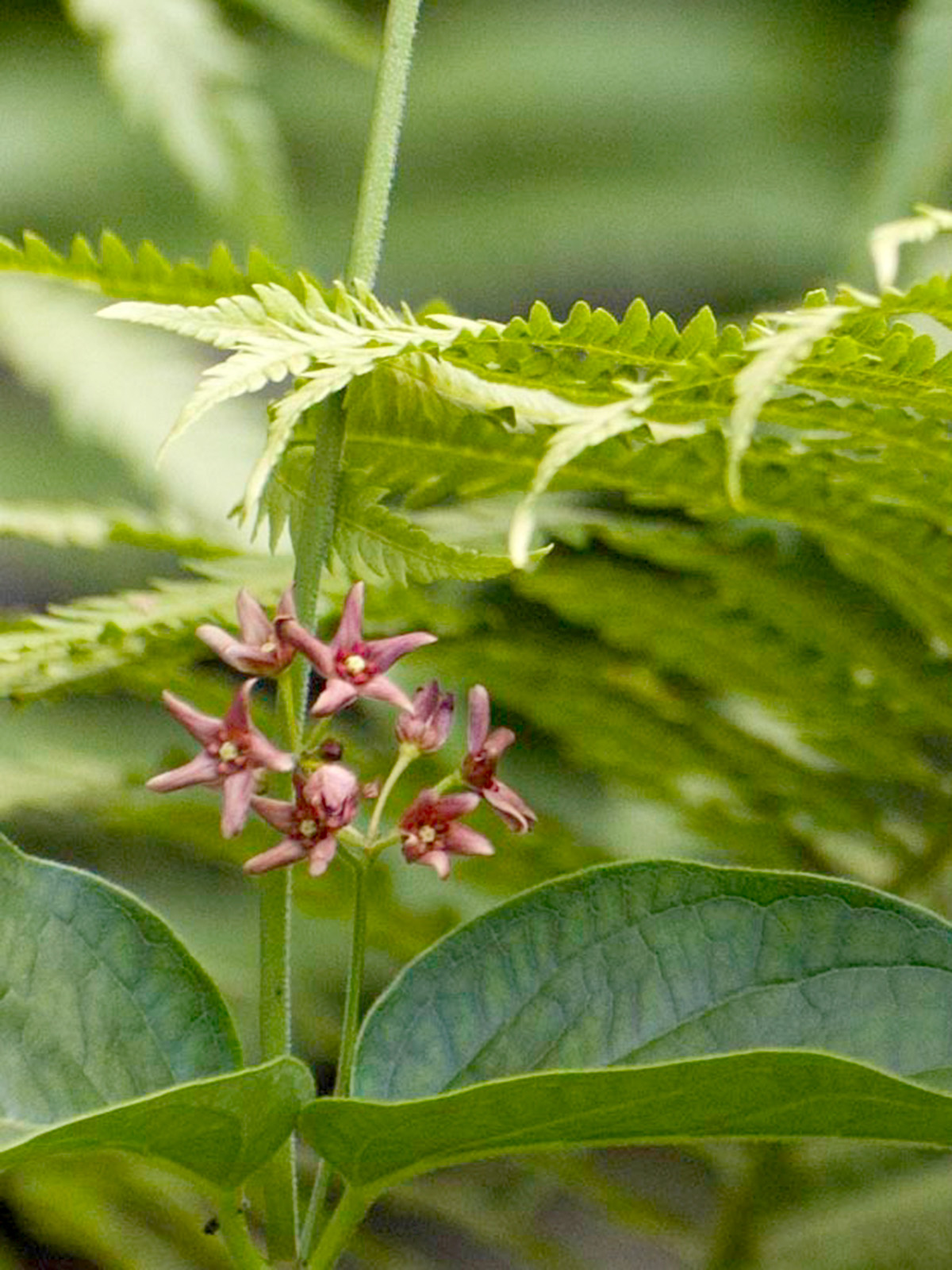
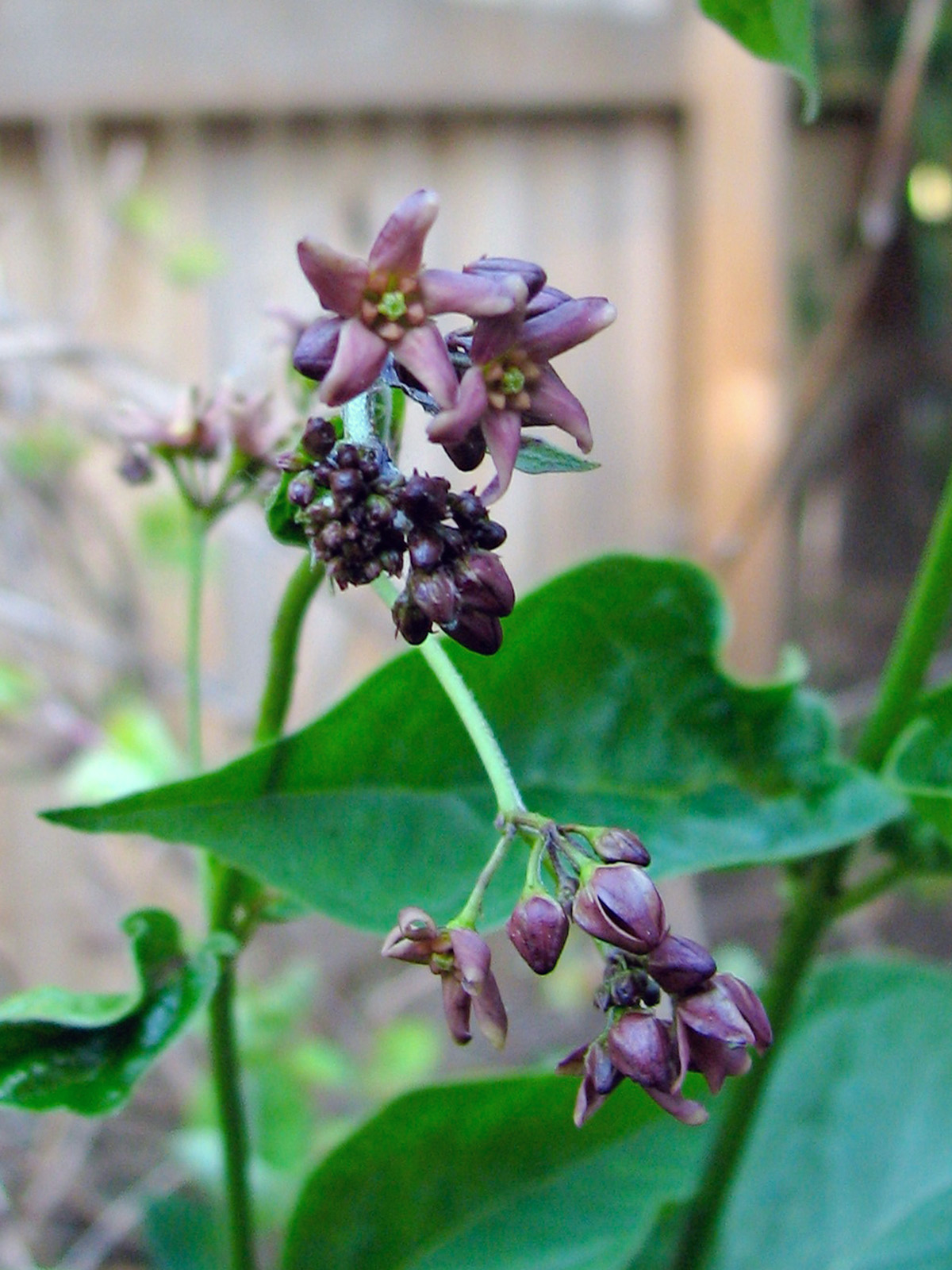
The non-native swallowwort not only is invasive, but it’s particularly bad for monarchs. It’s a milkweed relative, so the female monarch — checking the chemical composition of the plant with her feet — judges it to be a milkweed and lays her eggs on the leaves.
The problem is that the caterpillars cannot eat the leaves of this non-native plant and they die.
AND it’s a non-native invasive plant, taking over a lot of land that could otherwise have grown milkweeds and other native plants of value to wildlife. BAD NEWS for us all and VERY difficult to eradicate. It has been a disaster for local natural areas as shown here. (See Resources below for more information.)
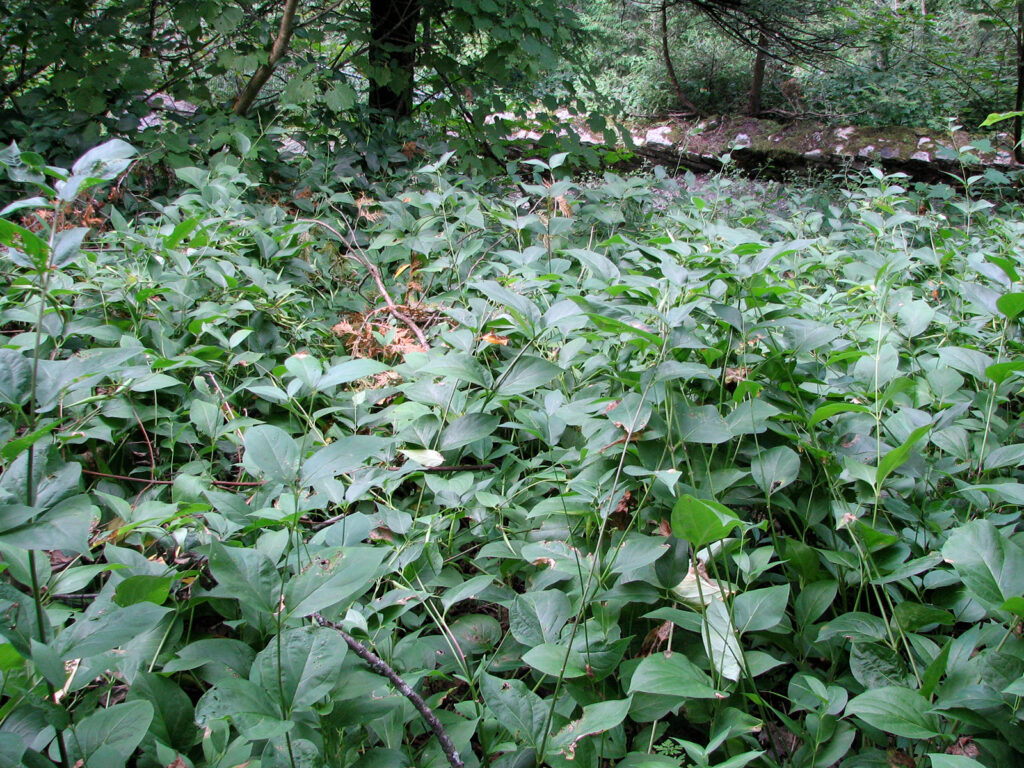
Another serious problem is that swallowwort (both black swallowwort and pale swallowwort) takes over so much land in natural areas and in such dense stands that it crowds out native milkweed, leaving even less milkweed available for monarchs — and even less available land for other valuable native plants for all creatures.
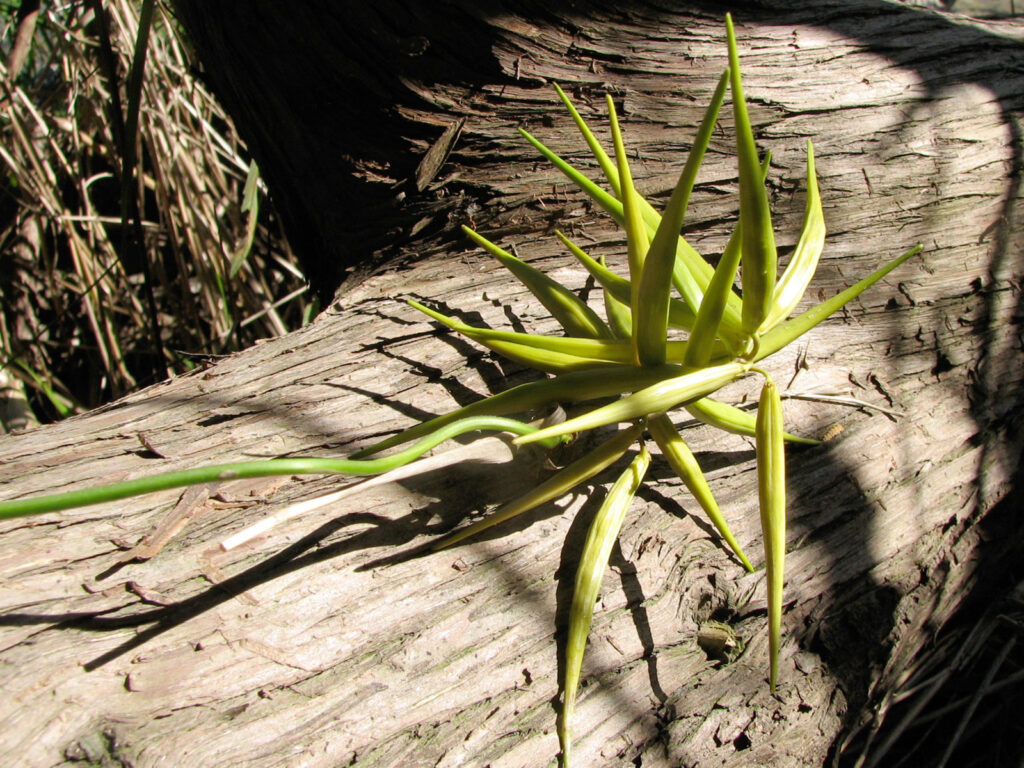
It’s easy to see swallowwort’s resemblance to milkweed in this photo taken at a local state park.
The pods are very similar, though more slender than those of most of the milkweed species I grow.
I pointed out this plant to my walking companion and said it was such a shame that it was out here along the edge of our beautiful lake. She reassured me, noting that it wasn’t a problem as long as it was out here.
It took me a minute to realize what she meant: As long as it wasn’t messing up people’s home landscapes, it wasn’t a real problem! It’s pretty discouraging to learn that otherwise well-meaning, well-educated people have so little understanding of ecology and of our total dependence on healthy ecosystems in the world beyond our yards.
Resources
- Monarch Joint Venture:
- A number of excellent factsheets are available on their factsheet webpage including invasive species, such as swallowwort and lots more (And some written in Spanish)
- NYS Invasive Species:
- Our Habitat Garden (this website):
Reflections
What good is the Mona Lisa? What good is Mozart’s music? We could live without it, but we would be diminished as a culture and as a people. There’s nothing like it. It’s unique.
~ Lincoln Brower, the world’s leading expert on the monarch when asked about the rapid decline in the monarch’s population being caused by massive illegal logging within “protected zones” in Mexico, and how the world would be different without this migration. CBS Sunday Morning, April 2010
Tens of millions attempt the migration, but the death rate is appalling. During the months-long trip, each life depends on the late-blooming flowers at which it nectars: dots of yellow and purple, goldenrod and aster.
~ Sara Stein, Planting Noah’s Garden, p. 8
